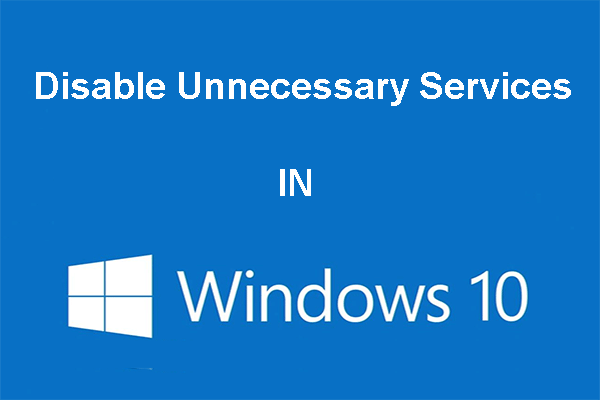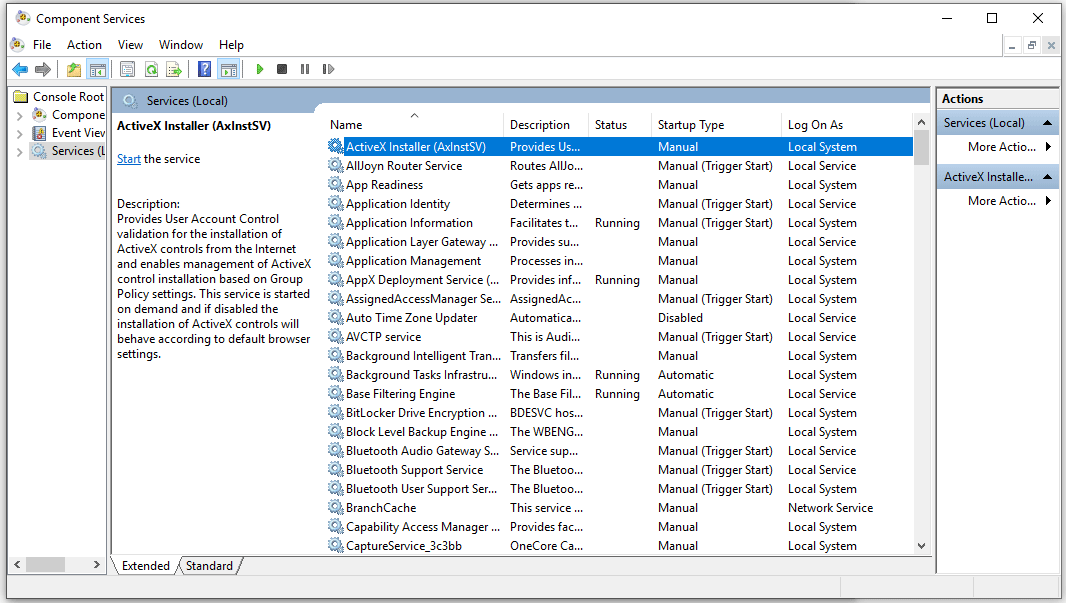What Service Using Data In Windows 10 Secretly
You Tin can Disable Unnecessary Services in Windows 10 [MiniTool News]
By Stella | Follow | Last Updated
Summary :

Windows 10 services are important components to maintain the polish running of your computer. Even so, not all of them are necessary for you lot. You can disable unnecessary service in Windows 10 to amend your computer performance. This post tells yous which services you can disable in Windows. More information, you can visit the MiniTool home folio.
What Are Windows 10 Services Used for?
Windows 10 services are there used to guarantee the normal functioning of your operating system. You lot'd meliorate keep their default settings. But, some of you may desire to disable unnecessary services in Windows 10 to allow your Windows ten run much faster.
Earlier talking most Windows 10 services to disable, we will show yous something useful like where to meet the Windows 10 services you have and their states:
Search for services.msc in the search box and printing Enter to open up it. Then, you will see the Component Services window. Click Services (Local) and you can come across all the Windows 10 services on your PC. You tin can select i item to view its clarification. Yous can also encounter the Description, Status, Startup Blazon and Log On As on the window.

Many services are ready as Manual that means that they are started only when they are needed. The services which are shown as Automatic can start with Windows boot.

USB port non working? No matter you are using Windows 10/8/vii or Mac, yous can read this article to detect a proper solution to fix this upshot.
Disable Unnecessary Services in Windows 10
Earlier disabling unnecessary services in Windows ten, you'd better create a System Restore Point and make a notation of the Windows services that you are disabled.
Many of you want to disable Windows 10 services to improve functioning. In this state of affairs, yous tin take a look at the services that are shown every bit Automatic because merely these services can make your Windows take longer time to boot up.
Now, you can lick the Startup Type header to show all the automatic services. Then, you can correct-click on one service and select Stop. While you can also see that there is no such a Stop selection after right-clicking a service. If and then, just get to the next one.
Nonetheless, before stopping a service, y'all can read the description of that Windows service and and so determine whether to stop it.
Which Windows 10 Services Are Safe to Disable
You may nonetheless ask what services can I disable in Windows 10. Here we will prove yous a listing that contains the Windows services that can be safely disabled:
- AVCTP service: if you don't employ Bluetooth Audio Device or Wireless Headphones.
- BitLocker Drive Encryption Service: if y'all don't use BitLocker storage encryption.
- Bluetooth Support Service: if y'all don't utilize whatever Bluetooth device.
- Estimator Browser: this will disable Network discovery of systems on the local network.
- Connected User Experiences and Telemetry: it will disable Feedback, Telemetry and Data Collection.
- Diagnostic Policy Service
- Diagnostic Tracking Service: it will plough off Telemetry and Data Drove.
- Distributed Link Tracking Customer: if you don't need to employ a network.
- Downloaded Maps Managing director: if you don't use the Bing Maps app.
- File History Service: if you don't intend to use Windows Backup or Arrangement Restore.
- IP Helper: if you don't employ IPv6 connection.
- Infrared monitor service: if y'all never utilize File transfer via infrared devices.
- Cyberspace Connection Sharing: it is an old service that can exist disabled.
- Netlogon: if you lot are not on a domain controller environment.
- Program Compatibility Banana Service: it will hinder your running in the Compatibility Manner though.
- Print Spooler: if you don't use a Printer.
- Parental Control: if you don't use the Parental Control feature.
- Remote Registry: you'd meliorate disable it. Then, no one tin can access your Registry remotely.
- Secondary Logon
- TCP/IP NetBIOS Helper: if you are not a role of a Workgroup network.
- Impact Keyboard and Handwriting Console Service: if you don't utilise a touch device.
- Windows Error Reporting Service: if you don't need to relieve or send mistake reports.
- Windows Image Conquering: if you don't utilize a Scanner.
- Windows Photographic camera Frame Server: if you never use a webcam or an integrated camera.
- Windows Insider Service: if you are not a part of the Windows Insider Plan.
- Windows Search: if you never use Windows Search.
Scroll downwards for the side by side news
What Service Using Data In Windows 10 Secretly,
Source: https://www.minitool.com/news/windows-10-services-to-disable.html
Posted by: bratcherwithile1984.blogspot.com


0 Response to "What Service Using Data In Windows 10 Secretly"
Post a Comment